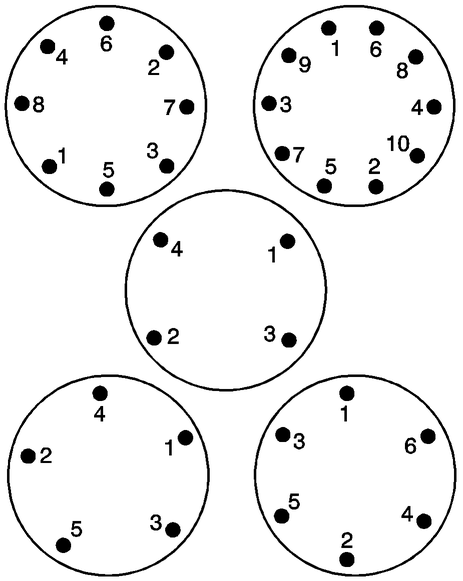Chevrolet Cobalt Service & Repair Manual: Wheel, Replace
Removal
| Caution: Never use heat to
loosen a tight wheel. This can shorten the life of wheel and damage wheel
bearings. |
| Wear approved safety glasses when
performing the following service procedures. |
| Do not use power grinders to clean
any of the brake rotor or brake drum to wheel contact areas. |
| 1. |
Raise and support vehicle using suitable
lift. |
| 2. |
Remove wheel center cap, if equipped. |
| 3. |
Remove wheel center cap nuts, if equipped. |
| 4. |
Remove lug nuts from tire and wheel. |
| 5. |
Remove tire and wheel assembly from
vehicle. |
| 6. |
If tire and wheel assembly is difficult
to remove or cannot be removed, perform following steps: |
| |
a. |
Apply a small amount of penetrating
oil to lug nuts and center hub. Allow a few moments for penetrating
oil to work. |
| |
b. |
Loosen lug nuts two complete turns. |
| |
d. |
Rock vehicle from side to side to loosen
wheel. |
| |
e. |
Repeat procedure, if required. |
| 7. |
If tire and wheel assembly still does
not loosen, perform following steps: |
| |
b. |
Allow vehicle to move forward, and
quickly apply brakes. Repeat procedure in reverse. |
| |
c. |
Repeat procedure, if required. |
| 8. |
When tire and wheel assembly loosens,
raise and support vehicle using suitable lift. |
| 9. |
Remove tire and wheel assembly from
vehicle. |
| 10. |
Clean rotor to wheel or brake drum
to wheel hub contact area using a wire brush or wire wheel. |
| 11. |
Where possible, clean contact areas
of wheel to brake rotor or brake drum using rotor resurfacing kit
tool No. J-41013, or equivalent. |
| 12. |
Clean surfaces around wheel studs using
wheel hub resurfacing kit tool No. CH-42450-A, or equivalent. |
| 13. |
Clean threads of wheel studs. |
| 14. |
If threads of wheel stud are damaged,
replace wheel stud as outlined in "Wheel Lug Stud, Replace." |
| 15. |
After cleaning all of wheel and brake
rotor or drum contact areas, use brake cleaner or denatured alcohol
to remove any dirt and debris from wheel nuts and brake rotor or
drum. |
| 16. |
Inspect and clean contact areas of
wheel. |
|
Installation
| Caution: Before installing
wheels, remove any build up of corrosion on the wheel mounting surface by
scraping and wire brushing. Installing wheels without good metal to metal
contact at the mounting surfaces can cause wheel bolts or nuts to loosen,
which can later allow a wheel bolt or nut to come off while the vehicle
is moving. Wheel bolts or nuts must be tightened in sequence and to proper
torque to avoid bending the wheel, brake drum or rotor. |
| Caution: Improperly tightened
wheel bolts or nuts can lead to brake pulsation and rotor damage. In order
to avoid expensive brake repairs, evenly tighten the wheel bolts or nuts
to the proper torque specification. |
| 1. |
Install tire and wheel assembly. |
| 2. |
Hand install lug nuts. |
| 3. |
Torque lug nuts in sequence,
as illustrated in Fig. 1, to 100 ft. lbs. |
| 4. |
Install wheel center cap, if equipped. |
| 5. |
Install wheel cap nuts, if equipped. |
|

Fig. 1 Lug nut tighten sequence
Suspension fasteners are critical
components because they affect performance of vital components and systems
and their failure may result in major service expense. New components must
...
On models equipped with the Passkey
Theft Deterrent System, a new password must be learned by the PCM when the
BCM/PCM has been replaced. When the PCM is replaced, the EEPROM calibratio ...
Chevrolet Cobalt Owners Manual
Chevrolet Cobalt Service Manual

 Wheel Lug Stud, Replace
Wheel Lug Stud, Replace Passkey Module
Passkey Module